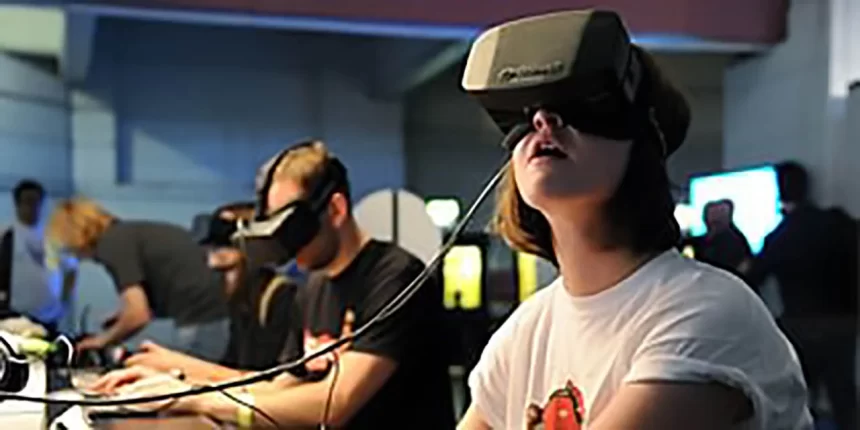Augmented reality (AR) and virtual reality (VR) are changing e-commerce’s face rapidly. These new technologies are now taking the most severe shopping pain points, both online and in brick and mortar locations. These technologies are turning them into attractive new selling points that are perfect for the wary consumer. The advantages of AR and VR vary in online shopping. According to recent statistics, many customers leave their shopping carts before checking out at 77.24 percent. In a world where ecommerce is affordable, online shops need to add an extra factor to attract and persuade customers to buy.
Advantages of AR and VR may provide these wow factors. AR and VR capabilities are indeed the future of online shopping, from interactive dressing rooms to online sales agents, and more.
How can your business incorporate these innovative features into your website and reap the advantages of AR and VR?
What Is Augmented Reality?
AR and VR are thought by many to be interchangeable. This is not the case — both forms of technology have different characteristics that make them unique for various ecommerce purposes. AR uses technology to impose on the world we interact with daily images, sounds, text, and other forms of information.
Pokémon GO is an example of a mobile app using AR. Your phone camera captures your current environment when you play the game to catch one of the elusive Pokémon Creatures. The app superimposes on top of your current environment, an animated figure of the Pokémon you’re trying to catch. It looks like there’s a Pokémon in the room with you when you look through your phone screen. Something cool, right?
AR is everywhere – from film screens to labs to the palms of our hands. This futuristic technology is rapidly changing the way we interact with the world – and our technologies. The way we shop online is already making changes. However, not all undertakings involving augmented reality are successful. The advantages of AR and VR vary in many industries. As they are new in this technological world, it will take some time to reap its full benefits.
Google’s infamous Google Glass project launched in 2013, aimed at turning augmented reality into wearable technology. The project projected text, images, videos, voice commands, and other sources of information onto the lens of a pair of glasses. Google ultimately pulled Google Glass at the end of 2015.
What Is Virtual Reality?
On the other hand, virtual reality does not involve the use of our present environment. Virtual reality technology uses our five senses (seeing, smelling, hearing, touching, and taste) to emulate our surroundings using many different technologies. Not all virtual reality experiences use all five senses, but all are taken into account by the best ones.
Virtual reality technology’s most popular form is using VR headsets in gaming and watching videos. To immerse a player in a setting, these headsets use a point-of-view video. The popular Oculus Rift VR headset has several specially designed games to accompany it.
Use of AR in Ecommerce
So how is this technology translated into the world of ecommerce? AR can provide your website with numerous advantages, exciting features, and interactive tools. There are many ways to use AR for the online shopping pleasure of your customers, including:
- You can use AR to view your products in the environment of your customer. If they want to see how your lamp would look at their desk. Having AR capabilities on your website might push them to make the right purchase decision.
- If you are selling clothes, makeup, jewelry, or any other item that customers would like to see on their own. You can launch an AR-powered application so that customers can try their products before they visit a store or make a purchase. This application can even persuade consumers to fall in love with a product they have never heard of before, pushing them to purchase.
- You can use AR in context to provide product information. If you simply list descriptive details without context on your website, the product’s real benefits can go beyond your customers’ heads. They can discover how impressive your product is by showing them a product in their hands using AR while providing information simultaneously.
You can use it to your advantage if you have AR technology in your budget. The longer you spend on your site interacting with your AR technology, the higher your likelihood of making a sale. Google also boosts the SEO rankings of pages based on how long a customer remains on the site–but if they leave, the search engine also penalizes you.
Many visitors to your website, rather than your desktop computers, will surf the web on their smartphones. If the AR features don’t work on their devices or make your load time too high. They may leave your page, and you may see ranking penalties. Make sure you have both mobile – compatible and desktop – compatible AR capabilities. If you are unable to make mobile users tech-friendly, consider disabling it on your mobile site.
Benefits of VR in Ecommerce
The online shopping experience also benefits significantly from VR. Customers will appreciate the convenience of viewing your products without having to leave their homes. It will range from testing new products to highlighting your showrooms. Seeing a product near and interacting with it via VR will significantly impact the customer’s purchase decision.
VR capabilities can provide your company’s website with numerous benefits:
- To highlight specific products and features, you can create virtual showrooms. These three–dimensional renderings will draw your customers into the products’ unique capabilities and allow them to “test” out the products before making a purchase decision. Videos already increase the likelihood of a customer purchasing the product – why not go one step further?
- Virtual versions of your stores can also be created to allow customers to visit, peruse, and make purchasing decisions about your products. If customers see the wide range of products you are offering and find something they like without leaving the house, this gives them more of an incentive to visit a physical site.
- VR capabilities can reduce shopping considerably, especially for those who don’t like to interact with pushy sales staff. For example, a knowledgeable guide and VR technology can be used by car dealerships to provide customers with information on different vehicles, enable test drives, and explore parts of the car without interacting with sales personnel.
Ensure your VR technology is mobile – compatible for on – the – go users just like AR technology. You don’t want any pesky SEO penalties or turn off customers to your website.
The significant advantage of AR and VR to e-commerce is creating an immersive experience & simulating real life. You can significantly boost your selling power with these technologies and more and stand out from the competition. VR and AR capabilities are perfect for companies seeking an innovative brand image and looking for the next step beyond standard websites and mobile apps.










